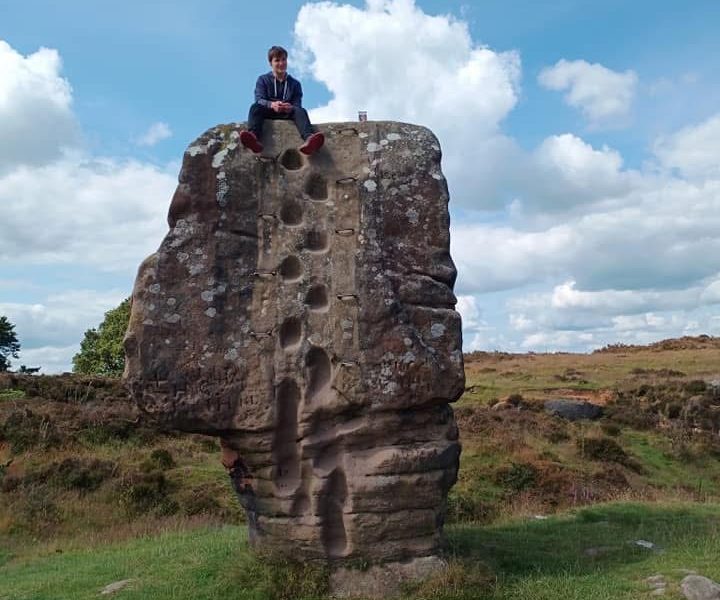A hidden gem, way off the beaten path in the Peak District lies a secluded ancient monument, Stanton Moor. It’s a little treasure trove of interests, whether it’s botany, geology or archeology that appeals. If none of that tickles your fancy, it’s a beautiful, easy walk with spectacular scenery. It’s very popular with humans and dogs alike. There is so much to say about it, and its importance in so many fields of science, that it’s hard to know where to start.
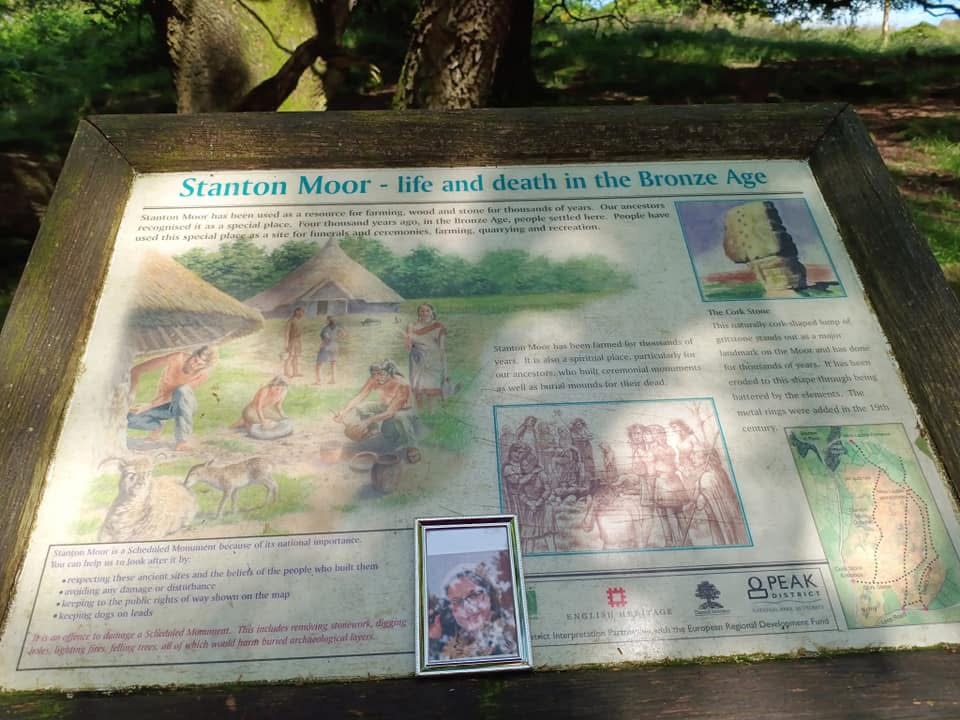
Stanton Moor has been settled since the Bronze Age at least. Not that there is much evidence of that now. Archaeology in the Victorian times was not always sympathetic, and certainly wasn’t at Stanton Moor. But if you are a buff in the subject and you know what to look for (or you download the information from the right website), you can still stumble over a lot. http://www.stone-circles.org.uk/stone/stantonmoor.htm is one website that will show you the location of the archaeological sites. Another option is the megalithic portal, which has several pages for Stanton Moor. This is the first https://www.megalithic.co.uk/article.php?sid=294.
Stanton Moor Geology in Brief
The moor is a gritstone outcrop cut off from the other gritstone regions of the Dark Peak. The whole moor is of geological interest as a syncline. The type of gritstone is known as Ashover. The moor was quarried for years and old, dormant quarries are still visible. Although the scars of which have been smoothed over by time and nature. Be careful around some of them because they have quite a drop. The one behind the Cork Stone is easy to access and provides shelter from the winds if the Great British weather is its usual, unpredictable self. Because of the unusual nature of the sandstone, parts of the moor are designated as a Regionally Important Geological Site.
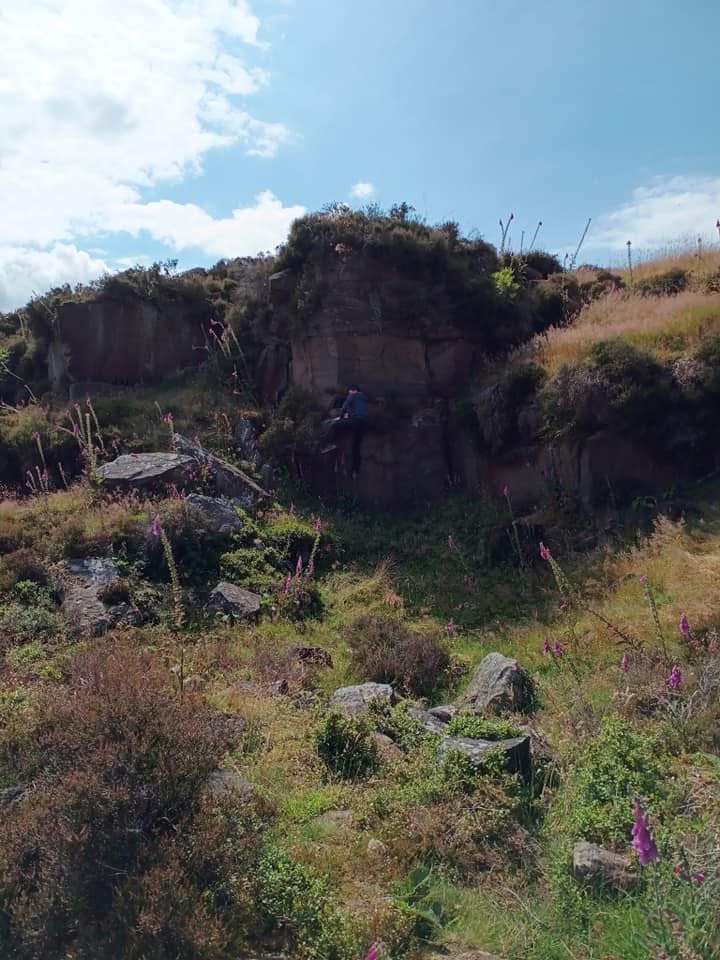
Stanton Moor Archaeology in Brief
The archaeological importance of Stanton Moor may be even more impressive. It’s a small moor. I could easily walk around it in 40 minutes. But within this small area are over 70 ancient burial mounds and two, definite stone circles dating back to the Bronze Age and possibly three others. It’s one of the largest Bronze Age “cemeteries” in Europe.
The most famous of the circles is the Nine Ladies. The story is of nine maidens dancing on the sabbath who were turned into stone as a punishment. A tenth stone a few meters away is the king stone and that is supposed to be the fiddler who was playing for the ladies. Of course, most believe that not to be true! The circle predates Christianity. Archaeological evidence suggests that the circle was used by druids in ceremonies around life and death. It is still a draw for the modern pagan movement and is frequently visited for celebrations during the solstices. The king stone is actually the only remaining one from another stone circle.

Just over the road from the Cork Stone entrance to the moor is a smaller stone circle known as Doll Tor. This was extensively excavated and damaged, and has been restored, but we will never know how accurately this was done. This circle is not well known and doesn’t attract the visitor numbers drawn by the Nine Ladies. This makes it more popular with pagans as they can be largely private.
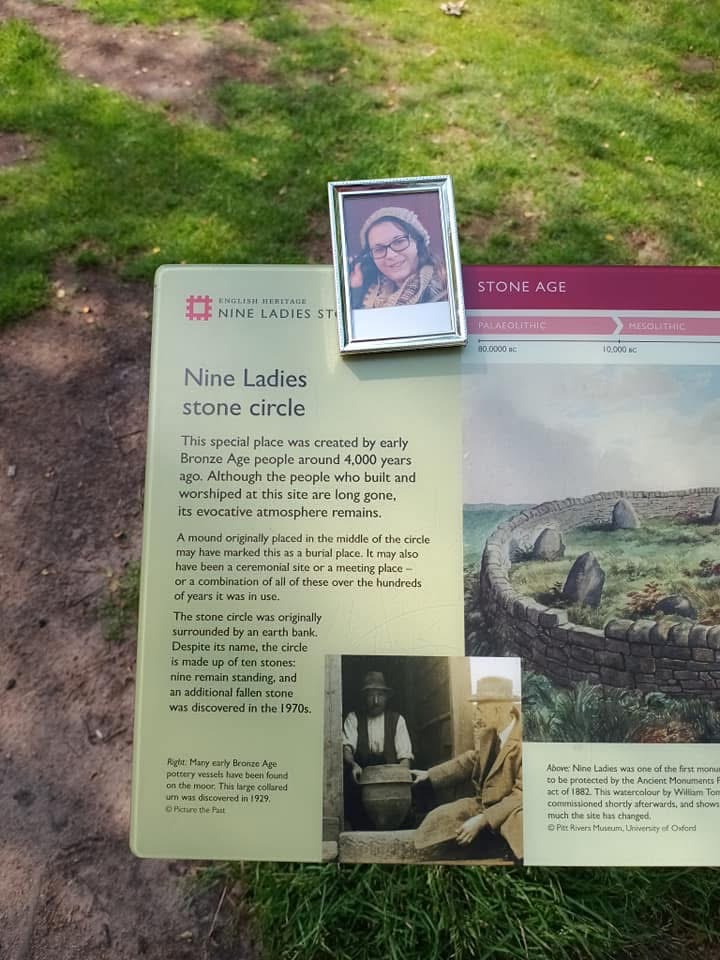
There are also three, possibly four ring cairns and the remains of at least four barrows. It is entirely possible that the quarrying has destroyed many more important archaeological sites. It was clearly a special place for the people living in the area thousands of years ago. The archaeological excavations carried out over a century ago were less than sympathetic and destroyed a lot of the historical evidence. Tourism has made an impact on the moor and created erosion, especially around the Nine Ladies. This ancient treasure still lives under the threat from proposals to reopen the quarries on the moor, which would be devastating for the history that is still there.
Stanton Moor Fauna and Flora in Brief
The moor is full of heather. Visit during late summer and you will be in a sea of glorious purple. The moor is classified as both environmentally sensitive and a listed conservation area. Sphagnum mosses grow in the damper areas, beautiful birch trees are all around, bilberries provide a little treat in late summer. The soil in the area is acidic due to the peat formed by the moss, so the plants and wildflowers are acid-loving plants.
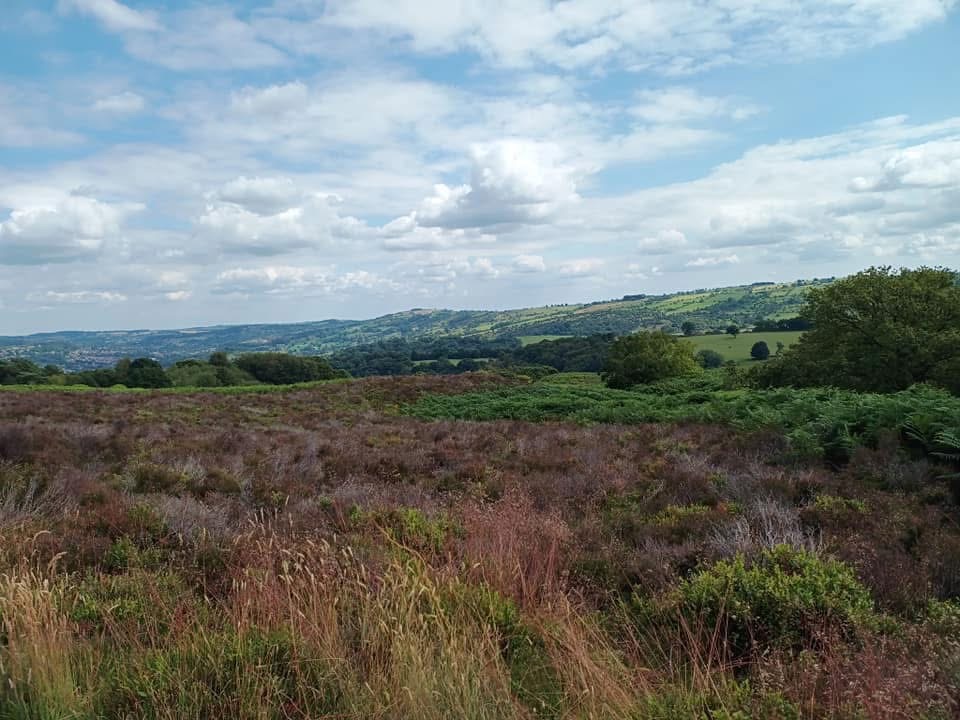
Twitchers will enjoy the moor and surrounding villages. As well as the more common songbirds such as just about every type of tit, robins, wagtails and blackbirds, you may be lucky enough to spot curlews, buzzards, kestrels, woodpeckers, various warblers and even a heron. Wild deer live in the woods, so keep your eyes peeled on the narrow, winding roads as a magnificent stag may wander out in front of you and herds may leap a wall to get to fresh grazing. There are badgers, hares and other rodent species.
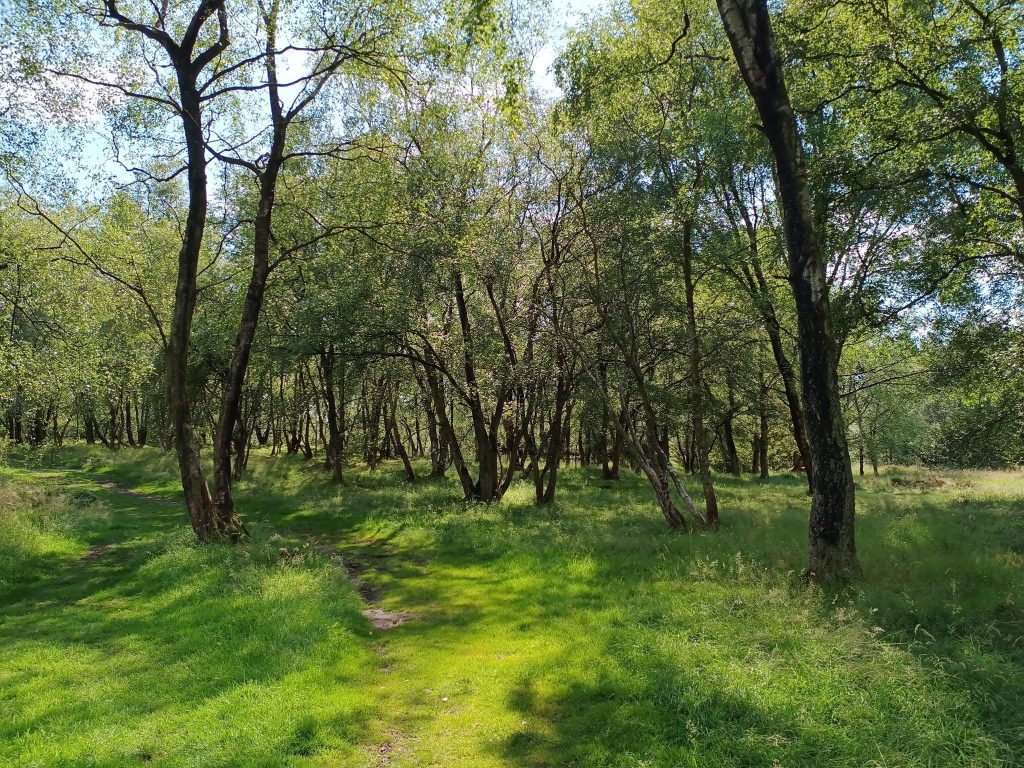
Other points of interest
The moor has several large and unusual stones which are an attraction in their own right. Arguably the most obvious is the Cork Stone. It’s a 4.2m sandstone, with a width of over 2m. It has been eroded by the wind over many thousands of years. But it’s popular with novice climbers due to the hand holds and toe holds in one side. Several other large and impressive stones are scattered throughout the moor. The Cork Stone isn’t even the biggest on the moor, but it’s certainly the most unusually shaped one.
The Cat Stone is arguably the biggest on the moor, and just over the road from the Cork Stone entrance. And very prominently visible from the road is the Andle Stone. Other large, named stones include the Duke of York Stone, the Heart Stone and the Duchess of Sutherland Stone. But wherever you are, you won’t be far from a large one and the edges of the moor are full of huge gritstones.

A much more recent addition to the points of interest is the Earl Grey Tower, sometimes called the Reform Tower. The exact date it was built isn’t known, but it was after 1832. The local landowner, William Pole-Thornhill, built it in honour of Earl Grey, who succeeded in his quest to reform parliament in the early part of the 19th century. The tower is very run down now and can’t be entered for safety reasons.

I took my 16 year old stepson to burn off some school holiday energy. We had a very pleasant summer day walking the entire moor. It isn’t very big, but with so much to see, and such breathtaking scenery, you quickly forget that modern life exists and quickly understand why this was a special place for our distant ancestors.
Don’t worry about younger family members being bored. With quarries to explore and rocks to climb, their imagination will take over and they will have a ball. For older teens, the Cork Stone has convenient handholds if they fancy a go at rock climbing. My stepson even climbed the Cork Stone with Amy’s photo to take a snap from the top with her. If you are somewhat more mature, the walk is quite flat and you can take an easy pace around. The moor is a very popular walk, so some of the paths are quite eroded and there may be the occasional stone to trip you up.
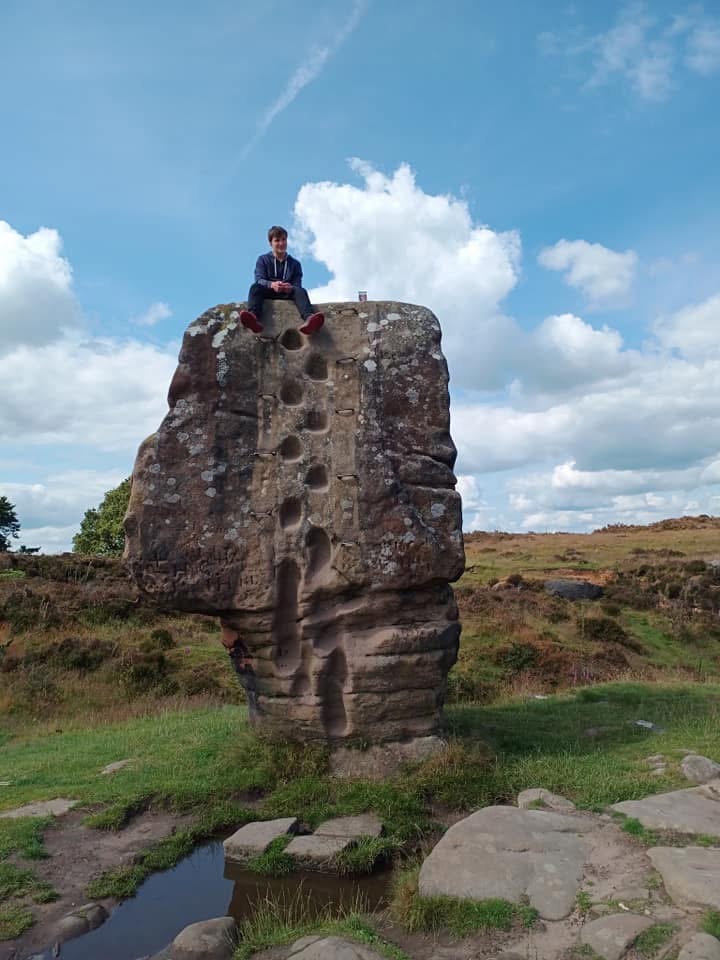
It’s definitely worth a visit, and the villages on either side of Stanton Moor have great real ale pubs if you build up a thirst. The Flying Childers in Stanton in the Peak has several real ale awards and is a quaint, traditional little pub with a beautiful garden at the back. Birchover on the other side has the famous Druid Inn and the Red Lion has some great beers and wonderful food. If you are visiting the Peak District, make sure this is part of your itinerary.

